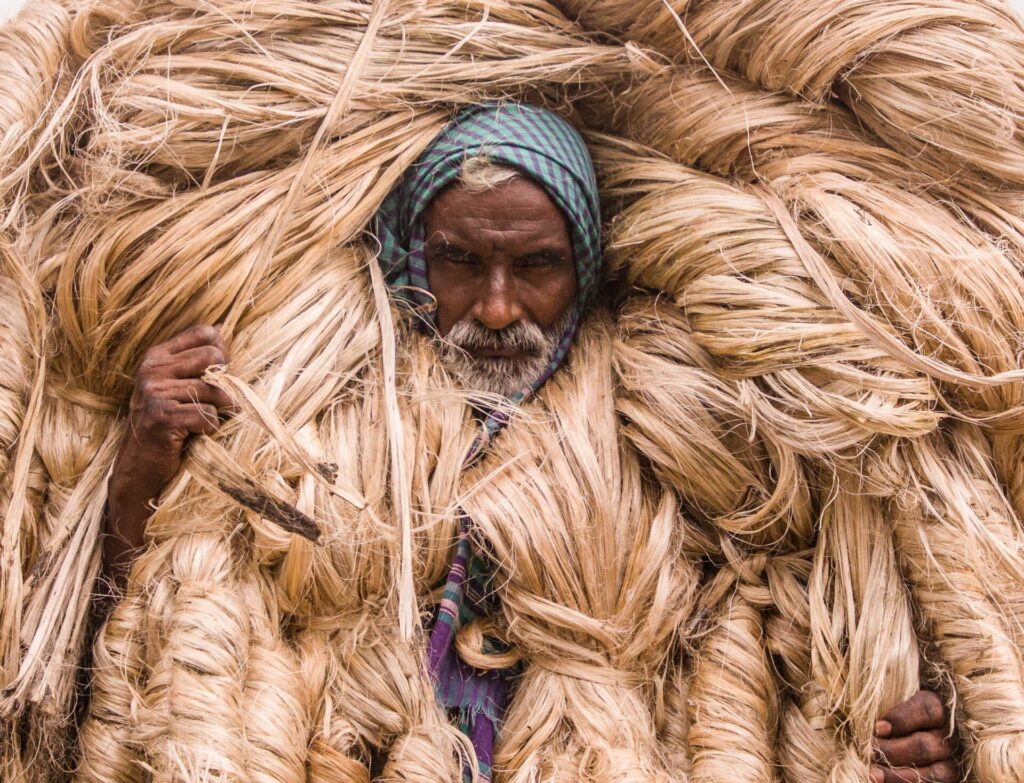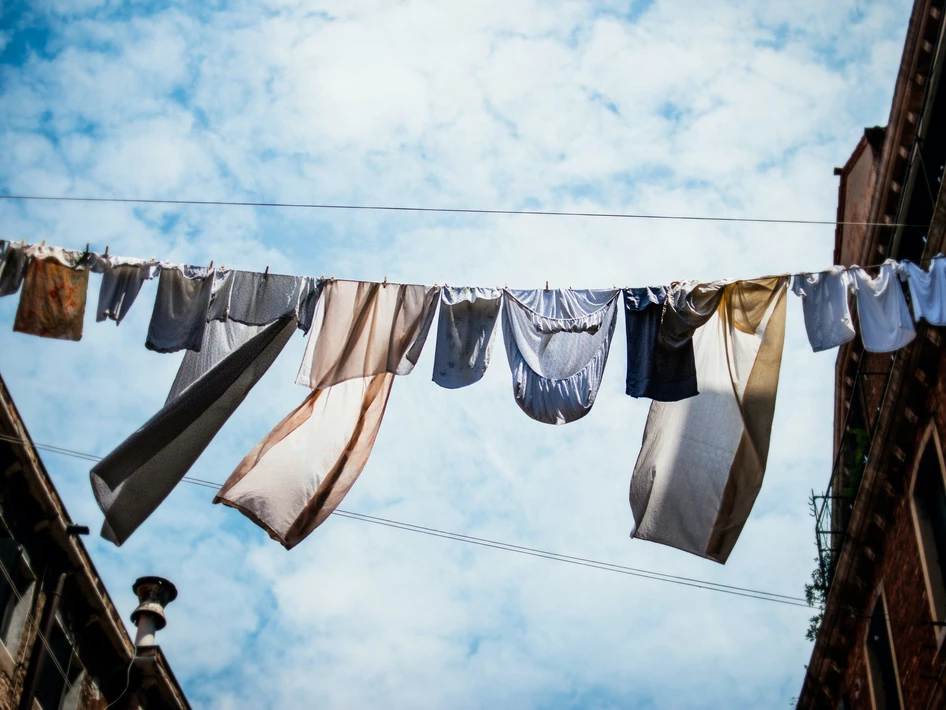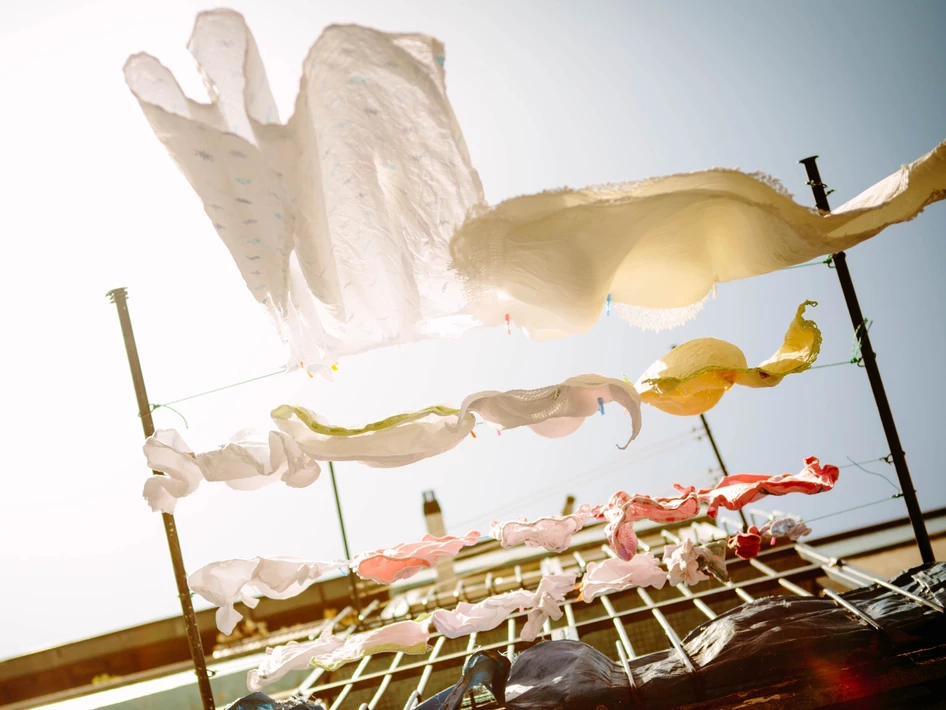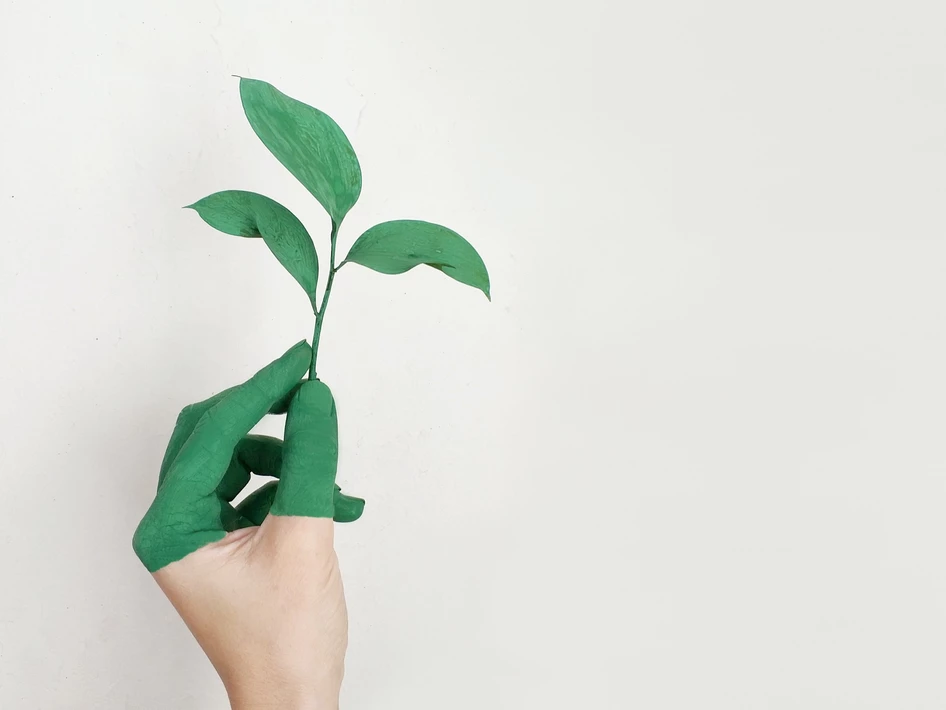As I sifted through my mom’s saree collection in search of the perfect outfit for Diwali, I came across one with a captivating golden sheen and a natural, earthy charm. The fabric, an exquisite fusion of jute and silk, was rustic and chic, all at once. Known as the Golden Fibre, jute has played a pivotal role in India’s clothing and fashion industry for as long as time. The historical usage of jute as a fabric can be traced back to the Indus Valley Civilization. Today, it is one of the major crops cultivated in India, second only to cotton.
Being a natural fibre, jute is a hot favourite as an eco-friendly alternative. Its UV protection, sound and heat insulation, low thermal conduction and anti-static properties make it a wise choice not only as traditional wear, but also as fabric for fashionable clothes, home furnishing and fashion accessories.
So can jute be our sustainable alternative to other synthetic fabrics or even cotton? Let’s dive deeper and see how it fares on our sustainability scale.
PRETTY FOR THE PLANET – 4/5
Jute Fibers – Renewability and biodegradability
Jute is a wood fibre, made up of cellulose and lignin. It is recognised for its complete biodegradability, environmental friendliness, and renewable nature. The plant matures within 120 days of planting, and requires minimal pesticide or fertilizer use in tropical lowland areas with humidity surpassing 60%. Its biodegradable characteristics ensure natural decomposition without leaving harmful residues or causing environmental pollution. Nevertheless, the biodegradability of jute fabric may vary according to the processing methods used to transform it into usable fabric. Mechanical retting, for instance, generates more waste and neglects the utilization of discarded stems after fibre separation.
While jute itself is environmentally-friendly, the conversion of jute fibers into usable materials involves chemical treatments or mechanical processes that pose certain environmental and social hazards. The widespread use of caustic soda on jute fibres, particularly when blending with wool, silk, or cotton, for items like sweaters and sarees, may impede the biodegradability of the fabric, presenting challenges to its eco-friendly reputation.
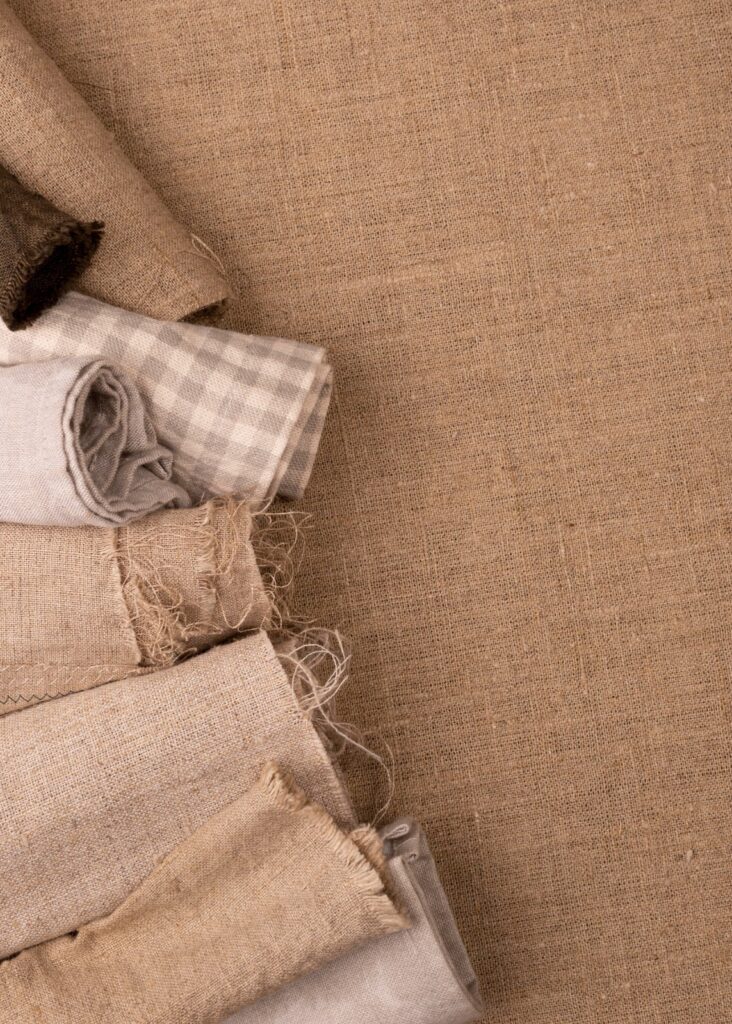
Carbon absorption by jute
Jute has the ability to function as a carbon-recycling crop. During a single season, a jute plant can absorb approximately 15 tons of carbon dioxide while releasing 11 tons of oxygen, effectively contributing to the reduction of greenhouse gas emissions and the mitigation of climate change.
Water footprint
The expansive root systems of jute plants play a crucial role in soil binding, erosion prevention and soil conservation. This becomes particularly significant in regions susceptible to soil degradation and erosion. Jute cultivation stands out for its relatively low water requirements compared to other fibre crops like cotton, making it well-suited for regions with abundant rainfall. This characteristic minimises the necessity for irrigation, contributing to the conservation of water resources.
Energy consumption
A considerable amount of energy is utilised during the manufacturing of jute fabric. According to data from the Ecoinvent 3 database, the cumulative energy demand (CED) for producing 1 kg of jute textile yarn averages 126.55 MJ (MegaJoule). However, in a comparative life cycle assessment, it is evident that the energy consumption of jute yarn is notably lower than that of cotton or even kenaf. Both cotton and kenaf represent yarns composed of cellulosic fibres. Increased energy consumption is directly associated with higher carbon emissions, particularly when reliant on fossil fuels.
PRETTY FOR PEOPLE – 3.5/5
Employment opportunities
The jute industry in India supports around 40 lakh farming families, including 2 lakh workers in organised mills, 2 lakhs in value-added diversification, and 3 lakhs in tertiary and allied sectors (Ministry of Textile Annual Report 2022-2023). This sector offers substantial employment opportunities, particularly in regions where jute cultivation and manufacturing are integral to the local way of life. Jobs range from farming to jute fibre processing, benefitting both skilled and unskilled workers, and contributing to socio-economic development. Additionally, the industry plays a role in empowering women in rural areas through their involvement in significant roles during the jute processing.
Working conditions
Retting is the crucial process of extracting jute fibres from the plant stem. Various retting methods exist, each with distinct implications for industry workers. Traditional or biological retting requires workers to stand in waist-high water for extended periods, resulting in health concerns. Manual labour tasks, such as loading and unloading of jute bales, also contribute to the health challenges faced by workers, and have been associated with musculoskeletal issues in workers.
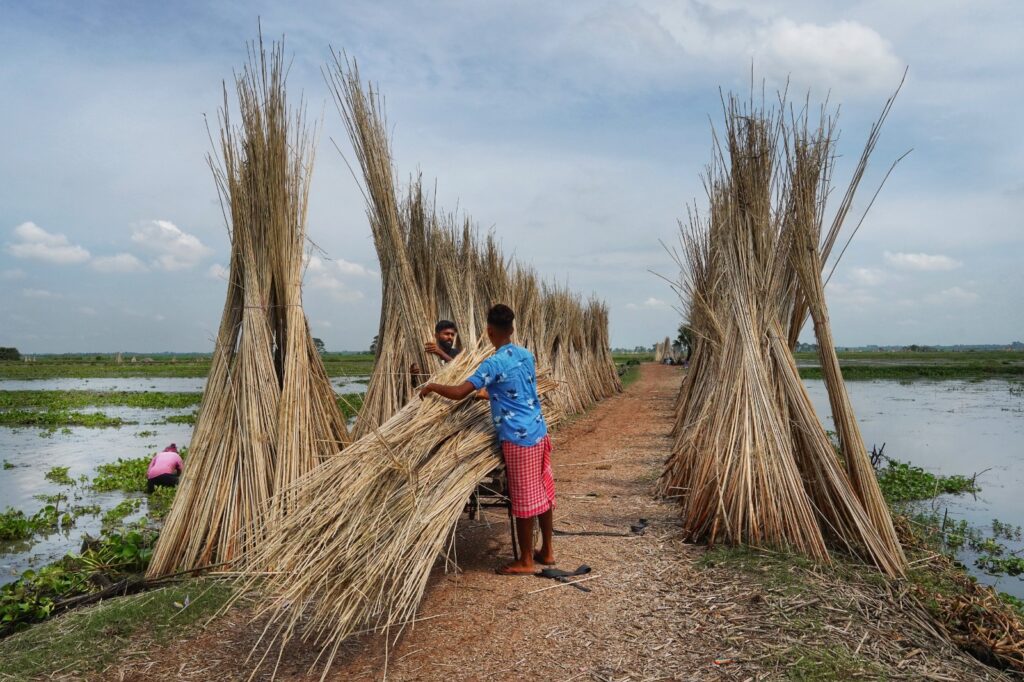
Chemical exposure
The jute industry’s lack of technological advancements and safety equipment has given rise to severe health issues among labourers. At every stage of jute fibre production, workers face exposure to hazardous elements. Processes like retting and blending with other fibres involve contact with chemicals, while handling jute dust also poses health risks.
Chemical retting, used to expedite the processing of jute, not only poses health risks for workers but also contributes to water pollution. Additionally, the utilisation of chemicals extends to the production of jute fabric. In the dyeing and blending processes, various chemicals are often introduced, presenting potential health hazards for workers involved in these stages.
Furthermore, when jute fibres are blended with other materials or dyed, the use of substances like caustic soda and dyes can have health implications. Special precautions and safety measures, crucial to mitigate these risks and safeguard the well-being of workers in the jute industry, are left wanting.
PRETTY FOR YOU- 4/5
Versatility
Jute stands out as a versatile, durable, and cost-effective fabric that can be woven into a variety of types, ranging from coarse to fine weaves. This versatility enables the creation of diverse consumer products, spanning fashion accessories, like hats and shoes, to home decor items like curtains and upholstery. The use of jute imparts a distinctive, earthy aesthetic to these products, making them visually appealing and suitable for both modern and traditional lifestyles.
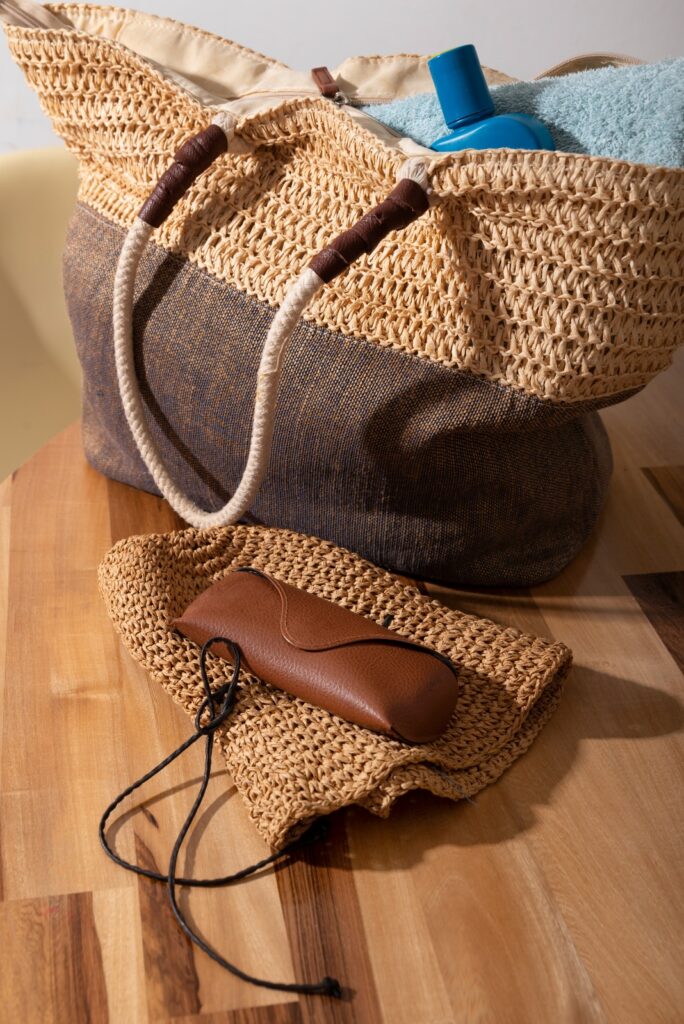
Additionally, jute’s adaptability extends to blending with various other fibers such as cotton and silk. Jute is woven with silk to produce ‘ghheecha’, a popular fabric used to create golden sari borders. When pure jute sarees are combined with silk or cotton, the resulting fabric boasts a soft, smooth, and lightweight texture. Jute blend fabrics often feature intricate details like block printing, Kalamkari, and Aari work, adding further artistic elements to the material. Additionally, there are limitations in colour options for dyeing jute, excluding dark and vibrant colours. The coarse texture of jute may be unappealing or uncomfortable for certain consumers, and its lack of flexibility or stretchability can affect the drape and fitting of garments unless blended with other fibres.

Durability
Items crafted from jute, be it home furnishings, fashion accessories or apparel, exhibit exceptional durability and resilience, capable of withstanding heavy use. This longevity not only guarantees consumers value for their money but also diminishes the necessity for frequent replacements, establishing jute-based products as a sound and lasting investment. Jute, however, is vulnerable to moisture, and prolonged exposure to water can impact the quality of jute products. Special care is needed when washing garments made of jute, as the fibres are prone to shedding and can be damaged during the washing cycle.
Affordability
Jute products offer affordability in comparison to their synthetic counterparts, making them accessible to a broad spectrum of consumers. This affordability provides sustainable and cost-effective choices for those seeking environmentally-friendly options.
Non-toxicity
Opting for jute products enables consumers to align their purchases with sustainability values, actively contributing to the reduction of plastic waste and carbon footprint. Jute’s inherent non-toxic and hypoallergenic properties make it a suitable choice for individuals with sensitivities or allergies. In contrast to synthetic materials, jute does not release harmful chemicals and poses minimal risk of skin irritations.
Jute remains a popular and sustainable choice for various products. Brands such as ReshaMandi and Pulimoottil Silks actively work with jute fabric, capitalizing on its unique properties and eco-friendly nature. Do you own accessories or decor made of jute? Tell us about your experience with the fabric, in the comments below.

